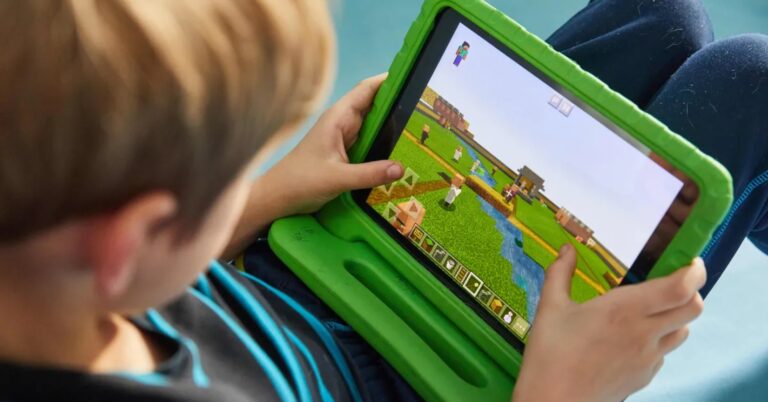Finding it tough to instill financial responsibility in your kids? Don’t sweat it – you’re not alone. Many parents face this hurdle, but there are effective ways to tackle it. As a seasoned parent and finance expert, I’ve been through this journey and I’m here to share my wisdom.
We all understand the importance of equipping our children with the right tools to navigate the world of money. It’s a tricky landscape, with pitfalls that can be avoided if we give them an early start. Yet, it’s often hard to know where to start or what methods to use.
That’s why I’ve put together these 9 effective tips that can help you on this journey. They’re practical, easy to implement, and more importantly – they work! From teaching them the value of money to encouraging saving habits, these tips cover various aspects of financial education.
So, if you’re ready to transform your kids’ understanding of money and set them up for a financially secure future, let’s dive into these tried and tested strategies.
1. Start with the basics
The first step in teaching your kids about financial responsibility is to introduce them to the basic concepts of money. This can be as simple as explaining what money is, how it’s earned, and why it’s important.
You could start by discussing the concept of work and earning money. Explain that people work to earn money, which they then use to buy the things they need or want. This can help your kids understand the value of hard work and the importance of making wise spending choices.
Next, you might want to introduce the idea of saving. Explain that not all money earned should be spent immediately. You can use a piggy bank or a savings account as an example. Show them how money saved can accumulate over time, leading to a larger amount that can be used for bigger purchases in the future.
These fundamental concepts form the foundation for more complex financial lessons down the line. By starting with the basics, you’re laying a strong foundation for your kids’ financial literacy journey.
2. Use allowance as a tool for learning
Once your kids have grasped the basic concepts of money, it’s time to give them some hands-on experience. One effective way to do this is through an allowance.
By giving your kids a regular allowance, you’re providing them with an opportunity to practice managing money. They get to make decisions about saving, spending, and even donating their money. This real-world experience is invaluable in teaching them about financial responsibility.
To make the most of this learning opportunity, it’s important to set some ground rules. For example, you might decide that a portion of the allowance must be saved. Or, you might set a budget for certain expenses, like entertainment or personal items.
Also, consider tying the allowance to chores or tasks around the house. This reinforces the concept of earning money and provides an understanding of the relationship between work and pay.
Giving your kids an allowance isn’t just providing them with money to spend. It’s giving them a tool to learn about financial responsibility in a controlled environment where mistakes won’t have serious consequences.
3. Encourage goal-setting
Now that your kids have some money of their own, it’s the moment to instruct them in setting financial goals. This is a crucial step in fostering financial responsibility as it encourages forward thinking and delayed gratification.
Start with small, achievable goals. Perhaps there’s a toy or a game they’ve been wanting to buy. Help them calculate how much they need to save each week from their allowance to be able to afford it.
As they get older, their goals will become more complex – maybe they’ll want to save for a new bicycle, a phone, or even their college fund. The skills they learn now will help them manage these larger financial goals in the future.
Goal setting involves more than just saving money. It’s about learning to make plans, sticking to them, and feeling the satisfaction of achieving what they’ve set out to do.
4. Teach them about debt
After laying down the basics and as your kids start gaining some experience in managing money, introduce them to the concept of debt. This can be a tricky subject, but it’s an essential part of financial responsibility.
An effective way to broach this topic is by using real-life examples. You could explain how credit cards work. You could discuss how people sometimes spend more money than they have, and how that leads to debt.
It’s significant to emphasize that while debt can sometimes be necessary (for example, for buying a house), it should always be managed carefully. Explain the concept of interest and how it can make the amount of money owed grow over time if not paid off.
You could also set up a system where your kids can “borrow” money from you. Then they can experience first-hand the process of paying back borrowed money over time.
Teaching kids about debt provides them with a realistic view of finances and prepares them for future financial decisions.
5. Instill the value of giving
Financial responsibility isn’t just saving and spending wisely, it’s also understanding the value of giving. Teaching your kids about charity can help them develop empathy and a sense of social responsibility.
You can encourage your kids to allocate a portion of their allowance for charity. This could be a local shelter, a global cause they care about, or even a friend in need. The vital part is that they’re making a conscious decision to help others.
In addition, involve your kids when you make your own charitable donations. Explain why you’ve chosen to support certain causes and how your contribution makes a difference.
By instilling the value of giving in your children, you’re not just teaching them about financial responsibility. You’re also helping them become compassionate individuals who understand the importance of helping others.
6. Introduce the concept of investment
As your kids become more comfortable with managing money, it’s a good opportunity to introduce them to the idea of investment. Though it might sound complex for kids initially, it can be simplified and related to their daily experiences.
Explaining what an investment is – putting money into something with the expectation of gaining more money in return over time. Use simple examples like planting a seed and waiting for it to grow into a fruit-bearing tree.
Next, explain that there are different types of investments. For example, they could invest in their education, which will pay off in the future when they have improved skills and better job prospects.
You can also discuss financial investments like stocks and bonds. Use age-appropriate explanations and emphasize that while investments can grow money, they also come with risks.
Introducing your kids to the concept of investment can broaden their understanding of financial management and prepare them for more sophisticated financial decisions in adulthood.
7. Discuss wants versus needs
A fundamental aspect of financial responsibility is understanding the difference between wants and needs. This is a crucial lesson that will help your kids make wise spending decisions.
Begin by discussing ‘needs.’ These are essential items necessary for survival and functioning, such as food, shelter, and clothing. Then, move on to ‘wants’ – these are desires that are not essential for survival or basic comfort, like toys, games, or luxury items.
Encourage your kids to think critically before making a purchase. Is the item they want a ‘need’ or a ‘want’? If it’s a ‘want’, is it something they can afford without sacrificing their savings or their needs?
Teaching your kids to distinguish between wants and needs will help them prioritize their spending and make smarter financial decisions.
8. Teach them to budget
One of the most practical skills you can teach your kids is how to budget. A budget is a plan that outlines what money is coming in (income) and how it will be spent or saved.
You can share your household budget with them. Explain the various expense categories, such as rent or mortgage, utilities, groceries, and entertainment.
Next, help them create their own simple budget using their allowance. They can decide how much to spend, save, and give. This exercise will not only teach them about budgeting but also about making financial decisions and dealing with the consequences of those decisions.
9. Lead by example
As a parent, the most effective way to teach your child about financial responsibility is by leading by example. Your actions and attitudes towards money can greatly influence how your child views and handles money.
Show your child that you prioritize saving by regularly contributing to your own savings account. Let them see you making thoughtful spending decisions and resisting impulse buys. If you use credit cards, explain how you pay off your balance each month to avoid debt.
Children often emulate what they see their parents doing. By demonstrating good financial habits, you can set a strong example for your kids to follow. This can be one of the most effective lessons in teaching financial responsibility.
Instilling a strong work ethic
Beyond financial responsibility, one of the most significant life skills you can teach your children is the value of hard work. Money doesn’t appear out of thin air – it’s earned through effort and dedication.
By assigning chores or tasks that are tied to their allowance, not only are you teaching them about earning money, but you’re also instilling a strong work ethic. They begin to understand that to achieve their goals, they need to put in the necessary effort.
While we’ve covered a lot about teaching financial responsibility, the journey doesn’t end here. It’s a continuous process that evolves as your kids grow and their understanding of money matures.
As parents, our role is to guide them, equip them with the right tools, and help them navigate their path towards financial responsibility. And no effort is too small when it comes to setting our kids up for a secure financial future.







